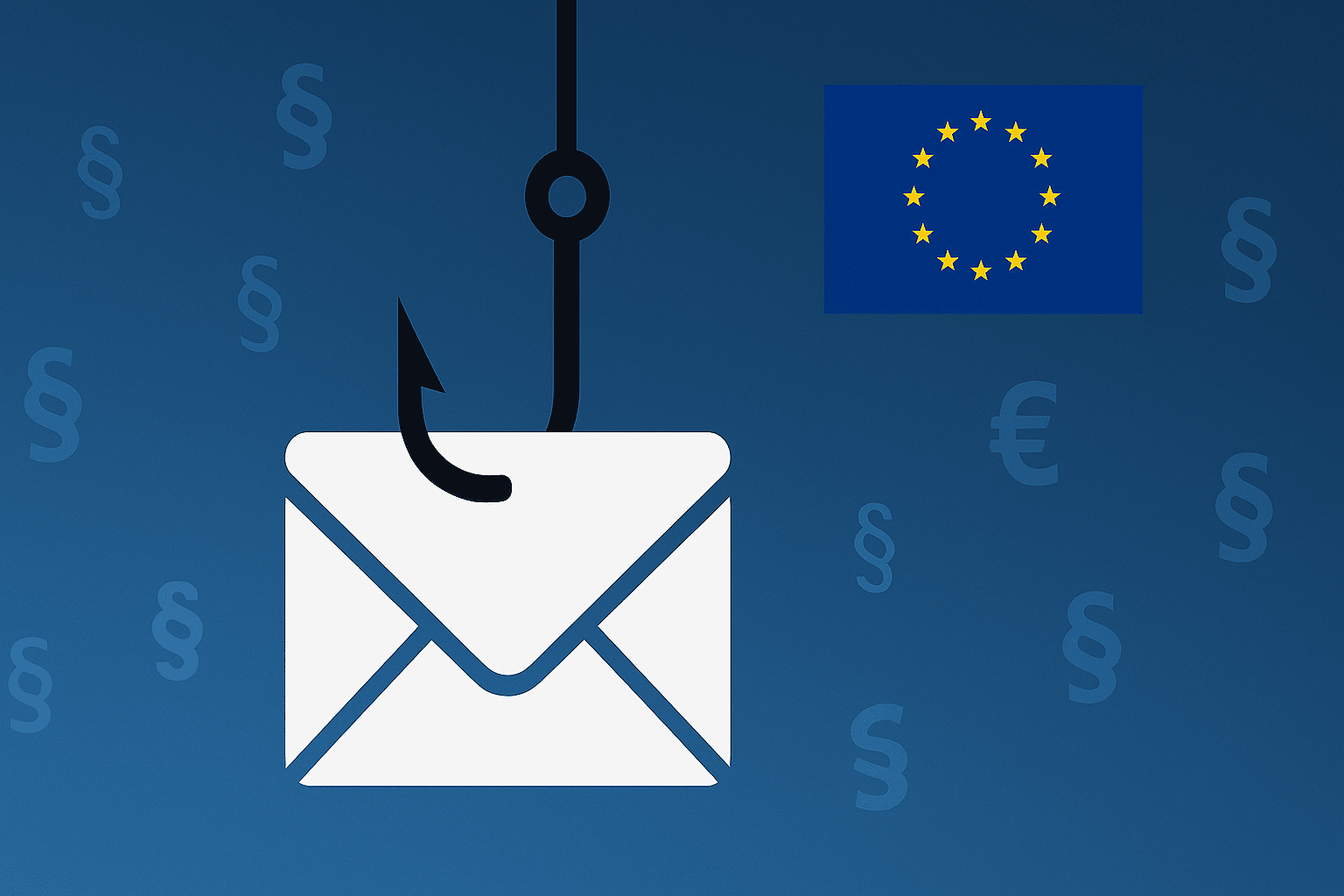Why Phishing Simulations Are No Longer Optional for European Businesses in 2025
Navigating the Legal, Technical, and Human Realities of Cyber Risk in the EU's Evolving Regulatory Landscape

Introduction
In 2025, phishing remains the #1 cause of data breaches worldwide. Yet for many European businesses—especially small and mid-sized ones—employee training remains reactive at best. With the rise of AI-generated phishing, tightening EU cybersecurity regulations, and increasing liability for companies, one thing is now crystal clear:
Phishing simulations are no longer a “nice-to-have"—they are a business necessity.
This article explores the trends, regulations, and risks that are making phishing simulations essential for all European businesses.
Phishing in 2025: Smarter, Scarier, and More Common
Phishing attacks have evolved. They're no longer clumsy scams from suspicious Gmail accounts. Instead, attackers now use:
- AI-generated emails that mimic internal communication styles
- Real-time data from LinkedIn or leaked credentials
- Targeted spear phishing aimed at decision-makers
According to the ENISA Threat Landscape 2024 report, phishing was involved in over 60% of initial access breaches in the EU in 2023–24. And this number is rising.
The Legal Perspective: NIS2, GDPR, and Cyber Insurance
🛡 NIS2 Directive: Cybersecurity Now a Legal Obligation
As of 2024, the NIS2 Directive is fully in effect across the EU. It expands the scope of cybersecurity regulations to more than 160,000 organizations, including:
- Medium-sized enterprises (50+ employees)
- Businesses in finance, energy, health, and digital infrastructure
- Public sector suppliers
Among the key requirements:
- Security awareness training for staff
- Incident reporting within 24 hours
- Management-level responsibility
Failing to provide such training—including phishing simulations—can result in fines up to €10 million or 2% of global turnover.
🔒 GDPR: Consent, Breach Notification, and Accountability
Even outside NIS2-covered sectors, the GDPR requires businesses to:
- Prevent unauthorized access to personal data
- Report data breaches within 72 hours
- Prove they’ve taken appropriate safeguards
If a phishing email leads to a data breach involving personal data (e.g., HR files, customer info), companies may be found non-compliant if no preventive measures, such as employee testing, were in place.
🗞 Cyber Insurance Requirements
More insurers now require regular employee security awareness testing as a condition for cyber insurance coverage. Without this, claims may be rejected or premiums raised significantly.
Why Traditional Training Fails
Many companies still rely on:
- Annual security webinars
- PDF handouts
- Static “test your knowledge” quizzes
But these approaches fall short because:
- Real phishing emails aren’t multiple-choice
- Employees forget training within weeks
- Attackers adapt faster than training materials
In contrast, phishing simulations provide real-time behavioral insight—how people react under pressure, not just what they know.
Benefits of Regular Phishing Simulations
Here’s why automated, realistic phishing simulations (like those offered by AutoPhish) are changing the game:
✅ Behavior-Based Training
Simulations teach through realistic practice, reinforcing instincts rather than just information.
📊 Trackable KPIs
Monitor:
- Open rates
- Click-throughs
- Form submissions
- Reporting behavior
This data lets you target weak points—by department, role, or region.
↻ Continuous Improvement
Monthly or quarterly tests keep security top of mind, not just once a year.
💼 Management Reports
Show leadership and auditors measurable progress and risk reduction over time.
Common Objections—and Why They Don’t Hold Up
Objection: “Our team is too small for this.”
Reality: SMEs are most vulnerable and often targeted first.
Objection: “It might embarrass employees.”
Reality: AutoPhish avoids shaming. It's about learning, not blaming.
Objection: “We outsource IT security.”
Reality: Employee behavior can’t be outsourced. It’s part of your internal responsibility.
Best Practices for Phishing Simulations
- Start simple, then increase complexity gradually
- Use different vectors (email, SMS, collaboration tools)
- Send from external-looking domains to simulate real attackers
- Include educational feedback after each test
- Test high-risk roles more frequently (HR, Finance, Executives)
How AutoPhish Can Help
AutoPhish offers automated phishing campaigns powered by AI. Our key features:
- 🧠 Realistic, natural-language phishing emails
- 🕵️ Spear phishing simulation for management roles
- 📈 Dashboards to track employee progress
- 🔐 GDPR-compliant, EU-based infrastructure
- 📨 No real email credentials ever collected
Try it at autophish.io
Conclusion: It’s Time to Act
Phishing isn’t just an IT issue—it’s a people issue. And in 2025, the stakes are higher than ever.
✅ Your customers expect strong security ✅ Regulators demand proactive measures ✅ Insurance providers need proof of resilience ✅ Your reputation depends on prevention
Start simulating. Start improving. Start protecting.